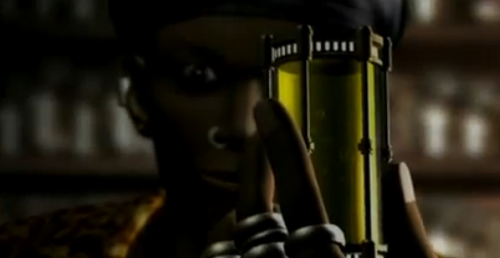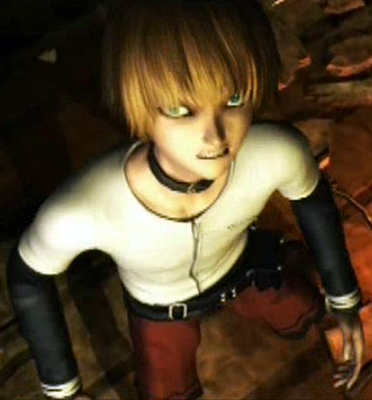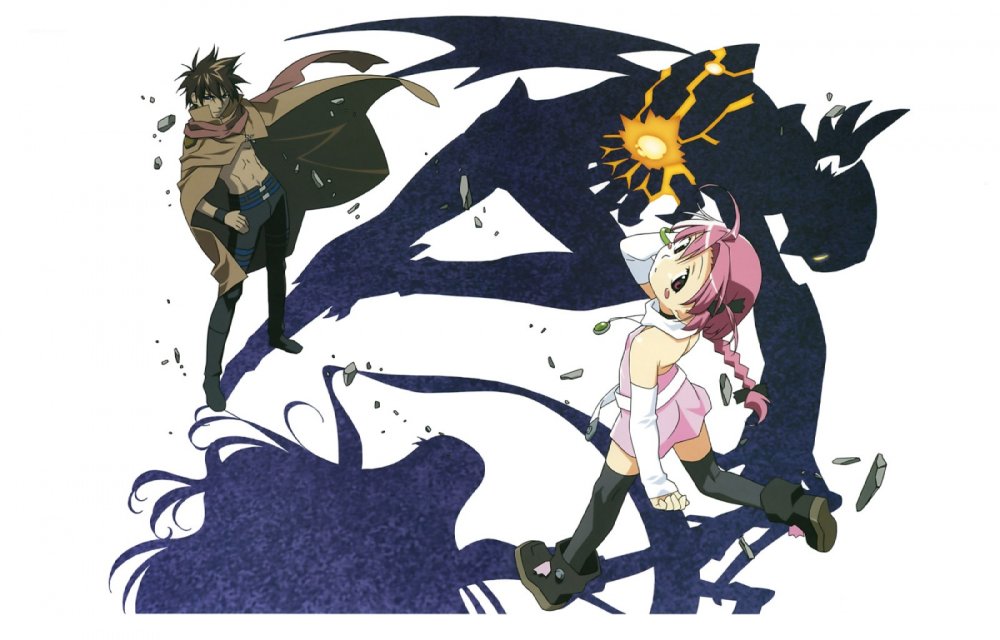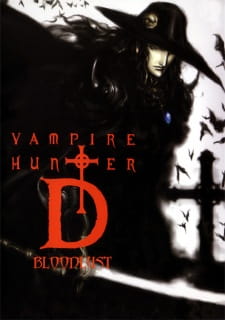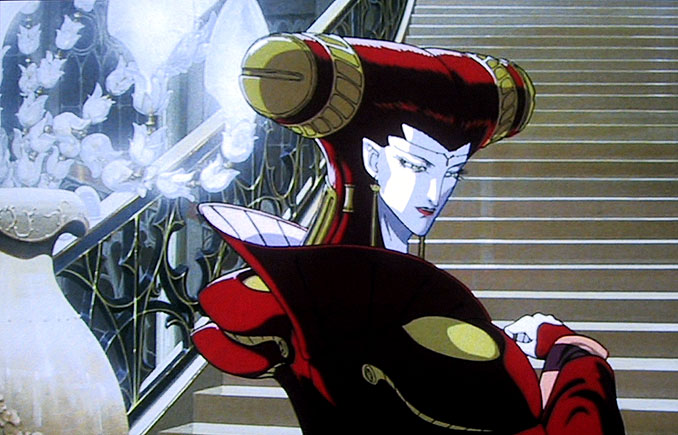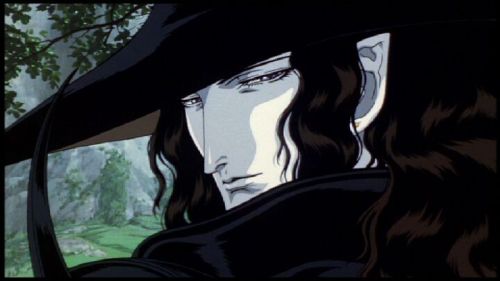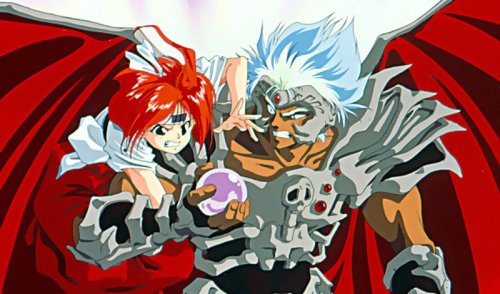Your all-in-one source for reviews of anime, movies, manga, and more. Find out more about some of the best titles around including those treasures you may never have heard of. No work is too big, too obscure, or too controversial for Jetstream Rev. "Let's Dance!"
Tuesday, October 29, 2013
Galerions: Rion (2004)
In the future, the supercomputer Dorothy controls the world. Seeing the human race as dangerous creatures, Dorothy has decided to end human life. In her efforts to recreate the world in her image, she has created the Galerians. A young boy named Rion awakens to the voice of a girl calling out to him for help. He finds that he is in a lab and he has no memories of who he is or how he got there. Wielding incredible psychic powers with little control and no memory to go on, Rion steps into a harsh world to find the mysterious girl and uncover the mysteries within himself. Unbeknownst to Rion, he is humanity's last hope against Dorothy and the Galerians.
The plot is mostly similar to the video games, specifically Galerians: Ash. In fact, while the plot has some differences if you've played Galerians: Ash you know most of what's to come in this film. However, Galerians: Rion should not be considered a carbon-copy of it’s video game predecessors. The script really succeeds in pulling you behind Rion. He isn’t a hero who awakens to the call of duty and he isn’t some badass loner kicking in doors. Rion is a 14-year-old boy who is confused, scared, and alone. He doesn't know where his parents are, how he ended up in a lab, and why he has psychic powers and he just wants to find someplace safe where he can figure things out. That's quite a difficult thing to do when he's being hunted by Galerians at every turn. He also develops well overtime. At first he is scared and confused and he wants answers. After he learns about Lilia, he wants to meet her, after meeting her he wants to help her save the world. Rion does this unconditionally and without too much hesitation even though he knows the odds are against him.
The movie has elements of horror more specifically its dark and dreary environments that could make even the most outdoorsy person an agoraphobic. From a lab right out of Frankenstein, to a mansion that gives off serious Amityville vibes, and a futuristic city where every step takes our characters to the wrong side of the tracks and you'd be right to think that the setting is an antagonist in its own right. The outdoor environments with the exception of maybe two scenes, are always dark and are either choked by gray skies or drowned by darkness and rain. Also, people are an element eerily missing from the movie. This is used superbly well and gives the feel that Rion is alone in the world. Each and every scene gives you a dark and moody feeling and some may be even a little frightened to see around the next bend. This does add a unique dimension to the story because it helps to convey that no matter where Rion goes he is never safe. The same could be said of humans because as long as Dorothy controls the network no one is safe from her. We see the story from Rion's perspective and we can see his fears and suspicions on display in almost every scene, due in no small part to his awareness of this reality.
The voice actors did an acceptable job but Dave Wittenberg and Lia Sargent deserve special mention for their standout performances. These two have been in the voice acting business for sometime and are known more for their work in anime. They bring their expertise to Galerians: Rion and the quality shines. Dave Wittenberg really put his best foot forward for Rion and he really portrays Rion's emotional highs and lows exceedingly well. It's nice to see he didn't fall back on the cliche of portraying a 14-year-old as bratty or immature but rather, Wittenberg really seemed to understand what kind of character Rion is and he really got that across in his performance. Lia Sargent plays a minor role as the Galerian Rita. Though her part is minimal, she too captures the feel of her character. Sargent’s soft voice is a perfect fit for Rita because her voice and appearance betray her high level of power. Rita doesn’t come off as the type of girl who would set a man on fire in a heartbeat but she is. Sargent’s voice and experience really make Rita shine. Initially, Jim Taggert’s voice for Birdman will seem alien and just wrong, but that’s probably how Birdman is and it's probably fitting that Birdman's voice is every bit as strange as he is himself.
In keeping with the games, the movie explores the relationship between Galerians and humans but it does so in a more personal manner by keeping Rion at the center of these interactions. Apart from his psychic powers, Rion isn’t altogether abnormal. In all other respects, he seems like any other 14-year-old kid. Although Lilia is initially, somehow, unaware that Rion is a Galerian, the two get along and trust each other completely. Interestingly enough, it is Rion’s fellow Galerians who seem to want to kill him on-sight. This could be attributed to the fact that the Galerians are under Dorothy’s orders whom they see as ‘Mother.’ The Galerians don’t seem to be forced to follow Dorothy but they do appear to be mentally and emotionally dependent upon the machine.
I was thoroughly captivated by this film and it kept me interested from beginning to end. The CG is very good for its time and the soundtrack is excellent. I have to give the movie some additional points because even though I was familiar with the games, the movie still served as a unique entry in the Galerians universe. If you're looking for a good CG film to pick up this is one of them. You can actually buy this on Amazon for less than five dollars which is a steal for a movie this good.
- Jetstream Rev
Labels:
Dave Wittenberg,
Galerians,
Galerians: Ash,
Galerians: Rion,
Kari Wahlgren,
Lia Sargent,
MTV2
Sunday, October 27, 2013
The SoulTaker (2001)
The SoulTaker opens to a crime scene. The victim, Kyosuke Date age 17 was stabbed in the heart, by his own mother. Days later, Kyosuke's grave is excavated by a beautiful, young woman named Maaya Misaki who finds Kyosuke very much alive. After taking Kyosuke home with her Maaya is kidnapped by a group of mutants from a mysterious organization simply called the Hospital. Things get even more complicated when we learn that Maaya is not human but rather a strange entity called a Flicker. She and others like her are being hunted by not only the Hospital but the Kirihara Syndicate. When Kyosuke nearly dies while trying to save Maaya, he undergoes a terrifying transformation into a creature called The SoulTaker. Kyosuke must adapt to this new life as The SoulTaker and use his power to battle the Hospital and the Kirihara Syndicate. Along the way he will unravel the horrifying secrets of the Flicker and his own origins.
It's challenging to critique The SoulTaker in terms of its plot because the anime combines science fiction, horror, and mystery to weave a tale that has numerous twists albeit a few plot contrivances here and there. Without going into too great a level of detail, it should be noted that even though The SoulTaker is on the short side i.e. thirteen episodes - half of the length of most anime, it is a very satisfying watch largely because with the exception of one or two episodes, the mystery surrounding the Flickers, Kyosuke's efforts to come to terms with being killed by his own mother, and the machinations of the Hospital and the Kirihara Syndicate are at the forefront of The SoulTaker's plot.
The characters in The SoulTaker are about as unique as the world they inhabit. Kyosuke isn't a typical protagonist in part because despite how things start off, his story doesn't require him to beat the bad guys and save the girl. Unlike some protagonists who wear angst as though it's some kind of fashion statement, Kyosuke is dealing with real challenges that he can't solve by crying or resigning himself to his fate. There's a lot more to it than that as Kyosuke must deal with the tragedy revolving around his mothers death, his own death and resurrection into this new kind of life, and his struggle to maintain his humanity when he forced to live as this thing.
Komugi is another fascinating character and a very bright spot in this dark world. Kyosuke's side-kick and mostly one-sided love interest, Komgui was actually an operative of the Hospital who defected after she fell in love with Kyosuke. While this is something of a contrivance I mentioned earlier, Komugi's defection is at least somewhat believable as she was grateful to the hospital director for saving her life in the past, but she never agreed with the kinds of things the organization was involved in.
While the anime's character designs are not entirely unique, the art style is very much so. The SoulTaker uses a lot of religious iconography and many of the scenes are drawn to mirror depictions of stained glass windows. The environments vibrant colors are juxtaposed against the characters that are sometimes drawn in shadows, and the backgrounds are rarely static. The art isn't too busy but it seems organic and it really helps The SoulTaker standout against more well-known titles that don't have this level of polish. There's also an interesting effect in that the backgrounds will sometimes reflect the mood of the characters themselves. One particular instance of this happening is when Kyosuke descends further and further into madness and the once pristine background shatters.
Voice acting is another area where The Soultaker excels. You’ve heard most of these actors from other anime but Brad Swaille steals the show. Perhaps best known for his role as Light Yagami in Death Note, Brad Swaille also does the voice for main character Kyosuke Date and in doing so he displays the range and intensity for which he is best known. "I'll destroy Kirihara" may not have the same impact as "I'll take a potato chip, and EAT IT" but most of the lines are just as memorable. The opening and ending themes of The SoulTaker are very well done, the opening in particular sounds like a throwback to 1990s sentai shows.
Overall, The SoulTaker is one of the better lesser-known anime out there. Having a limited DVD release and a spot on TechTV's notoriously unpredictable schedule prevented this title from getting the kind of exposure it deserved. Make no mistake this anime is fun to watch, highly entertaining, and the plot is quite different from most anime on the market today while the art style is top notch. Despite its short length the characters are well-developed and the story keeps you on the edge of your seat. This is definitely a title you shouldn't pass up.
- Jetstream Rev
Labels:
2001,
Geneon,
jam project,
lightning breaker,
nurse komugi,
Tatsunoko,
the soultaker,
WOWOW
Thursday, October 24, 2013
Vampire Hunter D: Bloodlust (2001)
Charlotte Elbourne has been kidnapped by the vampire Meier Link. Her father, desperate to see his daughter returned to him has called upon the services of the most dangerous vampire hunter ever to walk the earth. His name is D. It is D’s mission to rescue Charlotte and bring her back to her father. This time however, D has some competition. While D's reputation precedes him, the Marcus Brothers are regarded as the best of the best. They've killed hundreds of vampires and they have never failed a single mission. Yet still, there is more to this kidnapping than our would-be heroes know. It is a race against time as D competes with rival hunters, the powerful Meier Link, and his own nature.
Vampire Hunter D: Bloodlust is an elegantly woven tale that continues the exploits of one of the most enigmatic characters of all-time. It also improves upon the original by providing a deeper view into D’s personality, showing us how D relates to the world around him, and even greater variety in how other characters in this world see D and his kind. The interplay of good and evil in the central confrontation also takes forms not often seen in the genre.
Bloodlust explores the relationship between Charlotte, Meier, and D. If any approximation can be made of Charlotte's and Meier's situation it would be they are star-crossed lovers, and D is willing to destroy what ever bond they think they have. In D's eyes vampires are an abomination, and the very thought that love can bloom between a human and a vampire is not only incredulous but something D sees as impossible.
Bloodlust shares the techno-frontier setting familiar to the novel and 1985 film. The environments are created with such stunning attention to detail that it's easy to believe one can touch them. Whether the characters are in small towns, forests, glades, or castles everything is simply stunning and it's truly a feat of animation as quite simply there isn't a single anime on the market that looks even half as good as this. The clothing effects, hair movement, rippling grass, flowing streams of water, even the characters' reflections are a testament to Japanese animation and it looks like you're watching a moving painting.
Similar to the art and animation, the voice acting in the film is in a class of its own. Bloodlust wasn't dubbed in Japanese then re-dubbed with an English translation when it first released. Rather, the English dub came first and the script and animation was made with the English voice acting in mind. There is no noticeable delay in lip-synching, the dialogue is written very well, and conversations flow naturally between characters, not just because of a solid script but because the conversations themselves are delivered by an amazing cast who keep the personalities of their characters at the forefront of their performance.
Wendee Lee is no stranger to voice acting and she delivered a knockout performance as Charlotte Elbourne. While she shares the spotlight with lesser known voice actors their performance is nothing short of incredible.
Meier Link was voiced by John Rafter Lee who conveyed the regal dignity of a classical vampire. In addition, he was also able to capture a certain emotional quality of the loneliness some vampires feel after living so long and becoming disenchanted with eternal life.
Pamela Adlon does a good job portraying Leila as an extremely headstrong hunter. This woman is tough as jerky and harbors an intense hatred of vampires. This hatred seems to waver albeit slightly after meeting D, and Adlon did an smashing job to portray the ebb and flow of Leila’s emotions.
Andrew Philpot however steals the show. His lines though few, speak volumes of D's character. Philpot has a deep, almost darkly melodic voice which helps to tell D's story in its own right. Philpot balances D's angst with the character's determination and sense of purpose. D is thought to be an emotionless character but this has always been due to the fact that D believes actions speak louder than words. However, Philpot's performance gives a view into not only who D is but what D has been through. It's one thing to give us the idea of a character, it's another matter entirely to help us understand what makes the character what it is, and Philpot does this exceedingly well.
Vampire Hunter D: Bloodlust brought anime into the the new millennium with style, depth, and intensity on a level that few if any anime can match. Even if you've never been a fan of Vampire Hunter D or anime in general, every movie lover owes it to themselves to see this title. It's half animated and half amazing.
Labels:
anime,
classic,
horror,
vampire,
vampire hunter d,
vampire hunter d: bloodlust,
wendee lee
Saturday, October 19, 2013
VERSUS (2000)
Prisoner KSC2-303 is on the way to his execution when he escapes and flees to a mysterious forest in the mountains of Japan. After meeting up with his liberators, he learns that they are actually part of the Yakuza and they have no intention of leaving the forest until they receive orders from The Man. Easily provoked and quick to resort to violence, Prisoner KSC2-303 kills one of the them and the scene quickly devolves to a Mexican Standoff. Everyone is surprised when the thug rises from the dead. After the initial shock, the Prisoner kills the man again and escapes with a female captive. The two quickly find out that they have escaped to the Forest of Resurrection which is filled with dozens if not hundreds of bodies buried there by the Yakuza over the years. Plagued by zombies and thugs, the Prisoner and the Woman must find some way to escape, but when the Man shows up, he will reveal to them a horrifying destiny they could have never imagined.
The plot of VERSUS is actually very layered, having its origins in a movie that came out years before this one - Down2Hell. It should be noted that VERSUS is an extraordinary film that is truly one of a kind. It's no exaggeration to say that this film made Ryuhei Kitamura's career and exposed his artistry to millions of overseas audiences despite it’s meager budget (it would have been impossible to make this film in America). VERSUS became a huge success because it had both style and substance.
There's even a subplot within VERSUS that makes meta-commentary about itself, but it was so well-written it's one of the most standout high-points of the film. Hilarious and unnecessary, the sub plot revolves around two cops who are trying to track down Prisoner KSC2-303. They show up as comic relief and serve no other purpose than to constantly remind us that our main character is an escapee. What’s great about them, is that they have that cliche dynamic of good cop/bad cop taken to the extreme and played for laughs. Despite the fact that one cop is a hothead and the other is calm and collected neither of them handle any situation in the best way. These two characters became so popular they received two shorts in the Japanese re-release of the film.
Ryuhei Kitamura grabs the mainstays of cinema, throws them in a blender, and hits frappe. He has taken zombies, swordfighting, Yakuza, marital arts, shoot em ups, and shaped them into a spectacle of an action film and he makes it look easy. Despite the numerous details and events going on in the movie every thing fits well together largely due to a script that is airtight.
The cast of VERSUS play their roles with finesse if over the top at times and even then it's within the range of their respective characters. Instead of scouring Japan for actors who are already known, Kitamura was interested in people who could not only act, but fit his world. The two cops are simply priceless and deserve a movie so that they might explore their acting caliber. Kenji Matsuda is just too cool. When he is not acting crazy, he just has this casual style, this swagger and this attitude that gives the impression that he runs the show which isn't far from the truth as he chews up the scenery and his character really stands out.
Tak Sakaguchi (Prisoner KSC2-303) and Hideo Sakaki (The Man) steal the show.
This is Sakaguchi's debut as the Dark Hero and it is this role that people associate with him. Prisoner KSC2-303 is not a nice guy. He is not wrongly accused or thrown in prison for a crime he didn't commit. Everything on his rap sheet is legit. It's more accurate to call him a villain-protagonist because all it would take is a shift of focus to set the audience against him.
Hideo Sakaki is in a league of his own. He is the cold calculating bad guy taken to the next level. When he's told most of his men have been killed he already knows what really went down and doesn't make a big deal out of it. Even after he loses all of his henchman it's just business as usual to him and he ensures that even after experiencing a setback he'll hold the upper-hand. The movie has layers but it's not subtle. Betrayals are easy to see coming, it's easy to tell which characters are going to be alive by movies end, and when The Man shows up all hell breaks loose.
Kitamura didn't skimp on the details when it came to casting. With the exception of two or three of the cast members, every person in the film is a true-to-life martial artist and their skills are on full display in the film. What's great is that we see a wide array of styles including Judo, Kick Boxing, Shotokan, and Ken Po. Also, VERSUS does not overuse special effects. There are a few camera tricks with the lens to change the appearance of the daylight hours and there is some wire-work at the very end of the movie but none of these things are distracting. Kitamura relies on pure creativity and ingenuity in order to tell his story. Also, this is one of the better scores for Japanese action movies. The music doesn't just fit the scenes but also plays into the personality of some of the characters, giving the score a unique feel especially during the high intensity fight scenes.
It has action, style, a genuinely interesting plot, and some really funny scenes despite it's dark theme. The only real complaint I have about the film is that it ended with a cliffhanger and there was supposed to be a sequel to conclude this film. VERSUS was released in 2000. We're currently in 2013. That's all I'll say about that. If you aren't squeamish and if you aren't turned off but a sequel hook which obviously didn't lead to a sequel then I can't think of any reason you shouldn't check this film out. It was a very popular movie that saw three DVD releases so make sure you purchase the Ultimate VERSUS if you want the full experience.
- Jetstream Rev
Labels:
gun kata,
hideo sakaki,
horror,
martial arts,
ryuhei kitamura,
tak sakaguchi,
zombie
Poltergeist Report: Yuyu Hakusho (1994)
Yusuke and the gang are back in a full-length movie. In Poltergeist Report, Yakumo, the King of The Netherworld has escaped his prison and has set his sights on earth once again. In his mission for conquest, he is searching for a mysterious orb called the Power Sphere which -spoiler - is the key to his power. It is up to Yusuke and the gang to stop Yakumo and his minions from gaining control of the Power Sphere and wiping out humanity. The plot is standard fare for fans of Yuyu Hakusho. Demons show up to threaten the world, the Spirit Detectives have to stop them. With that said the movie plays out as you would expect from a typical episode of the show, only longer. If you've seen any arc of the series you know what to expect from the movie.
There is a greater focus on the plot and less attention given to the action scenes which is an unusual choice as the plot really isn't that deep. If Poltergeist Report were released on television one could quite easily wrap this together in two episodes. The villains are all flat characters who have little depth to speak of and only serve as a boss rush for the gang. So although the plot is the major focus, it isn't more interesting than the first arc of the series.
The quality of the animation is good for a title from 1994. While the characters do have canned running animation in certain scenes, they are animated quite smoothly when in dialogue and even during intense action sequences. Crumbling stones, running water, and swaying trees are all animated realistically and for the most part the anime looks very good even though it's showing its age.
The score isn't bad but apart from the classic Yuyu Hakusho battle theme the movie doesn't have any tracks that really stand out. It's not bad but none of it is exactly memorable.
While I enjoyed Poltergeist Report: Yuyu Hakusho it's hard for me to recommend it. There are episodes of the anime series that are much better than the movie and while it is entertaining to see how much stronger the characters have grown, the movie is hard to place within the series canon thus casting doubt if the events herein are of any actual consequence. If you're a big fan of Yuyu Hakusho then by all means check it out. If you were curious about the series and never had any exposure to it then this would be a good place to start. However, if you don't have any interest in the series at all then this movie isn't going to change your mind.
- Jetstream Rev
Labels:
detectives,
ghosts,
hiei,
kurama,
poltergeist report,
yu yu hakusho
Friday, October 18, 2013
Vampire Hunter D (1985)
Vampire Hunter D takes place in a post-apocalyptic future where the world has long since been devastated by nuclear war. When the last bomb was dropped and the remnants of mankind emerged from the destruction so did something else. All manner of supernatural creatures emerged from from the ether, animals and some humans mutated from the fall out, but the worst of all was the advent of the vampires. No one knows where they came from or why they are here. The human race didn't have time to ask these questions because just as they had come back from the brink of extinction, they were once again fighting for their lives.
Nearly a millennium after the war against the vampires ended with the victory of the humans, mutants and supernatural creatures still posed a constant threat and some say, somewhere out there still exists the last vestiges of the vampire race. Only one man stands between the forces of the dark and mankind. He is a Dhamphir; half-vampire and half-human. Walking between the worlds but rejected by both, he will not rest until every last vampire has been destroyed.
He is The Hunter.
He is D.
The script is solid and stays true to the source material as it was Hideyuki Kikuchi who oversaw the creation of this movie and he ensured that it closely followed the novel it's based on. This works marvelously well as Vampire Hunter D stays true to it’s source material and Hideyuki Kikuchi was able to have his work reach a wider audience.
The film opens and we meet Doris Lang, a skilled hunter in her own right protecting her land from mutants until she encounters something far more terrifying; Count Magnus Lee. In the next seen we see our dark hero riding into town like a cowboy draped in nightmares. D encounters Doris Lang who attacks almost without warning. This minor distraction barely slows our hero down as he continues on his way until Doris stops him and reveals she has been bitten. Within days she will be completely transformed into a vampire and it is only by killing the vampire who bit her can she be spared from the curse. D takes the job without hesitation and so our story begins in full.
Vampire Hunter D had a basic, but well-written plot loaded with one very big twist. The twist isn't what I revealed in the opening because they reveal D's mixed heritage in the first 20 minutes or so of the film. Rather than dwell on spoilers or non-spoilers it's worth exploring what the plot does right and these things are many. Unlike many anime today, VHD is very easy to follow - not because it in anyway is dumbed down but because the plot ties in very well with its setting. Vampires are evil. People hire vampire hunters to bring them down. What makes VHD work is that it's very plot driven but it also has a great cast of character that not only feel authentic to this world but actually make you care for them. Doris Lang doesn't feel at all out of place despite the feel of the industrial-frontier-punk world. She has a nice blend of believable heroine and sensitive female character who serves as something of a moral guide to her younger brother and even D at times. Doris also serves as something of a damsel in distress but it's not as outlandishly trite and offensive as some other female characters might be portrayed because for the most part Doris can hold her own physically and emotionally. But when dealing with the 5,000-year-old Count Magnus Lee, it's understandable that she's in over her head.
D is one of the earliest incarnations of the anime anti-hero - if not the first. While some aspects of his characterization stems from westerns which author and creator Hideyuki Kikuchi has mentioned were his inspirations, D is a type of character anime had not seen at this time. D rarely talks, opting to speak only when he has something worth saying, which is a very essential aspect of who he is. He doesn't have many people who are close to him and he doesn't labor to make bonds of any kind or even interact with others outside the demands of his job. He's always looking forward, always looking for something, and never slowing down to wait on those who would tarry to follow him.
Magnus Lee is every bit as villainous as you would expect from someone who terrorizes people because according to him, "It keeps me entertained." He doesn't sparkle, he doesn't cry, and he's not reciting poetry to Doris Lang. He is a stone cold villain whose heart is blacker than his cape and it works for him. What's interesting is that the contrast between Magnus Lee and Doris Lang isn't just a difference between pure good and pure evil, but it also shows the stark schism between how humans and vampires view the existence and each other respectively. It adds an intriguing dichotomy to the film that would not have worked if Magnus Lee was not the type of villain he was.
It's interesting to note that Vampire Hunter D addresses the issue of specism. Humans hate vampires and everything about them as they fear vampires are evil incarnate. At the same-time vampires feel as though humans are nothing more than cattle. D who is half and half, is caught right in the middle. He has to live in a world where he is hated by both vampire and human alike. In spite of that, D lives as he wants to live and does not allow himself to be bound by the prejudices of those around him. “I am what I am. How you see others is of no concern to me.”
The voice acting is very good given the time this anime was dubbed (1988) and especially in comparison to some of the ear-gratingly awful dubs we get today. Even though this was one of the earlier anime to come to the states and the American actors weren't the most experienced crew, they really got a feel for their characters and brought something unique to the table. I actually find myself preferring the American voices over the Japanese seiyuu. Michael McConnohie doesn't have many lines as D because D doesn't speak very often. When he does, his lines are delivered with a kind of determination, confidence, and even a hint of melancholy that characterizes D. In an interesting dynamic, D’s Japanese seiyuu is also very good but he portrayed D as a younger character than his American counterpart.
The animation is amazing for a movie this old. The movement of hair and clothing is very realistic, when they're outside of battle. VHD has the signature style of early anime with speedlines, technicolors zigzagging in the backgrounds, and the fact that D's cape seems to expand like wings whenever he leaps are very nice touches. If you grew up watching anime during the 80s and 90s these things are not only noticeable but make it all the more classic.
There is also a great deal of mist and a substantial amount of blood (which looks like fruit punch). The scenery transitions almost seamlessly from foreboding to beautiful. Most of the best imagery is drawn around D. His fight between Rei-Gansei is especially spectacular. It is dark and only the two can be seen. After D blocks Rei’s kick, he throws Rei high into the air and jumps after him. We see D’s cape and hair billowing magnificently while the moon is behind him causing Rei to look insignificant. The cels then show one side of D’s face, and then it switches to the other side, his hair and hat animating spectacularly.
The score in this anime is absolutely brilliant. It's moody, grim dark, but at the same-time there are tracks that are beautiful, and soothing if a bit repetitive at times. D's theme played at the end of the movie is one of the more simple tunes but also one of the best anime themes I've ever heard. It conveys the triumph and the tragedy, the magnificence and the sadness that is this character and when D rides off into the sunset it's a scene that sticks with you.
If you're a fan of classic anime, horror anime, or anime in general then I can't think of any reason you shouldn't pick this up.
Subscribe to:
Posts (Atom)


